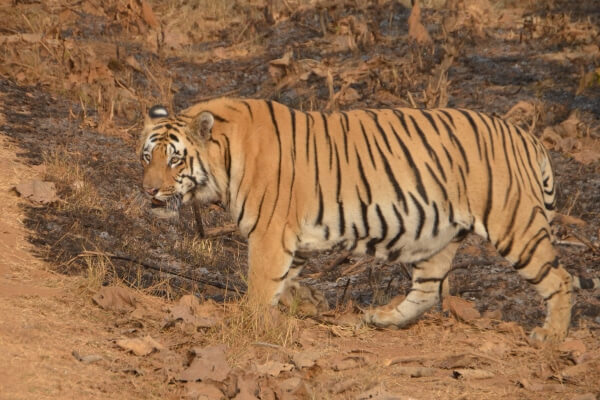Like Africa, India also boasts of the ‘Big Five’ – Royal Bengal Tigers, Leopards, Asiatic Lions, Elephants and Rhinoceros. They freely roam in one or more of the nation’s 106 national parks, which cover an area of nearly 44000 square kilometres accommodating over 500 wildlife sanctuaries.
Big cats in wild India
India’s wildlife icon is the Royal Bengal Tiger, the country’s national animal. Wildlife enthusiasts worldwide visit India to spot these big cats in the wild. Centuries before, the nation’s tropical jungles and swampy mangrove forests were a haven to tens of thousands of these predators. Unfortunately, the population has reduced significantly because of hunting, poaching and habitat destruction. Today, they are classified as endangered species; only around 2900 of them exist in India and some small numbers live in other parts of the sub-continent. However, the good news is that the numbers are increasing in India due to the strong conservation efforts of the authorities.
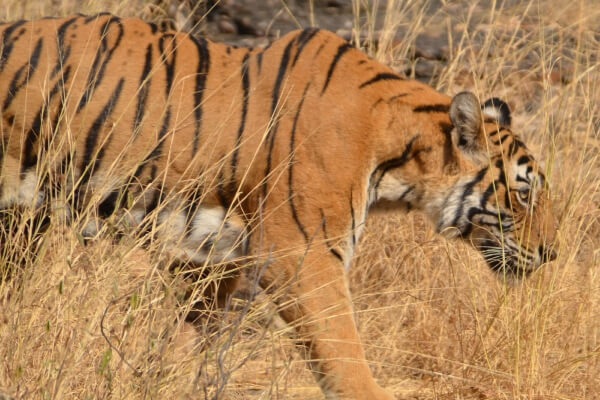
They can be spotted in several national parks, including Ranthambore in Rajasthan, Jim Corbett in Uttarakhand, and Tadoba in Maharashtra. Bandhavgarh and Kanha in Madhya Pradesh are also popular among tourists due to a good track record of sightings. The oldest tiger sanctuary is Jim Corbett, named after the 1875-born hunter-naturalist who wrote the famous book titled Man-Eaters of Kumaon, and the newest is Tadoba with a steadily rising population of tigers. Leopards can also be found in most of these tiger reserves.
Ranthambore is widely visited because of its proximity to the Pink City Jaipur, which along with Delhi and Agra forms India’s famous Golden Triangle, generally the first port of call for first-time international travellers. This park was home to Machli, the world’s most photographed and longest-living tigress. She died in 2016 at the age of 19. She played a key role in regenerating the tiger population in the park; her cubs can be spotted now during the safari.
The world’s fastest animal, the Cheetah, went extinct from India in the mid-20th century but has been reintroduced at the Kuno National Park in Madhya Pradesh. The total number of cheetahs in Kuno, including cubs, is now 26, a milestone achievement for the nation’s ambitious conservation project.
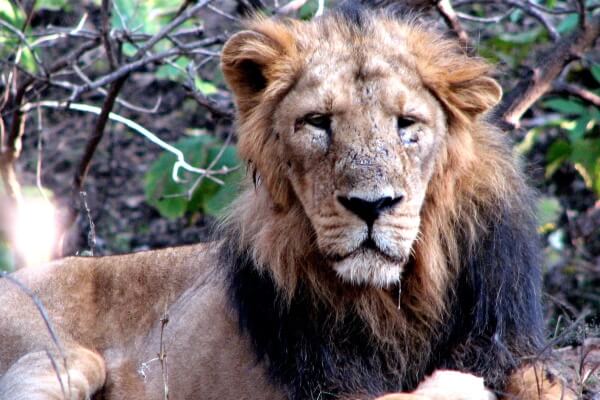
Lion fans must visit the Gir National Park in Gujarat. It’s the only place in the world, outside Africa, where the Jungle King can be seen in its natural habitat. Asiatic Lions average over two metres in length, and have a bigger tail tassel, bushier elbow tuffs and more prominent belly folds than their larger maned African cousins.
The one-horned wonder
Kissing the fabled Brahmaputra River in the northeastern state of Assam, the Kaziranga National Park is home to the world’s largest population of the scarce ‘one-horned’ rhinoceros. A century ago, these species were nearing extinction, mainly because of excessive poaching for the illegal horn trade. However, as a result of strong animal conservation and anti-poaching programs, the authorities have been able to successfully increase their population, currently estimated at just over 2000. In recognition of these efforts, in 1985 UNESCO stamped the 430 km/sq parkland as a World Heritage site.
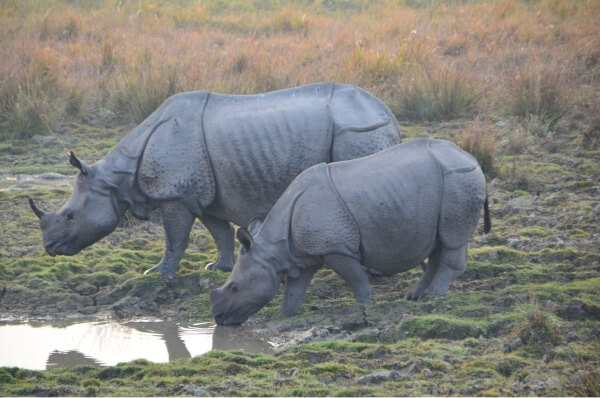
According to UNESCO, Kaziranga is one of the last unmodified natural areas in the northeastern part of India. Tall elephant grass intertwined with numerous streams and large landlocked water bodies called ‘beels’ cover most of the land, sometimes opening into rummaging grounds with shorter grass, few tall trees and bamboo thickets. The Krabi Hills on the southwestern side provide a high woodland refuge for the animals during monsoon season when the lowland is submerged by the backwaters of the Brahmaputra.
Rhinos are best spotted from the back of an elephant. An early morning ride provides a unique opportunity to sense how divinely dawn sets in the wilderness. As the first rays of the morning sun start colouring the dew drops at the edge of the tall grasses, the giant beasts can be seen freely roaming through the grassland.
The largest mammals on earth
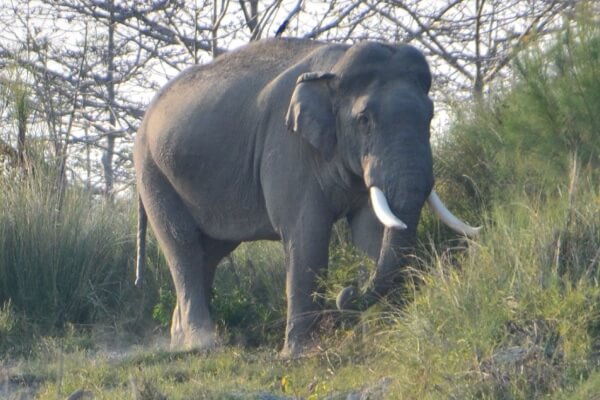
India’s population of wild elephants is large, and numbers have been holding steady in the range of 28,000 to 30,000 during the past decade. They are relatively smaller in size compared to their African counterparts and can be seen in many of the national parks throughout the country. The ones well known for elephant sightings are Mudumalai in Tamil Nadu, Bandipur in Karnataka, Periyar in Kerala and Similipal in Odisha. However, Jim Corbett National Park is hyped as the place where elephant herds can be spotted very easily. India wildlife
Into the wild
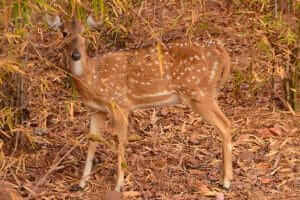
Besides the “Big Five’, many other varieties of wildlife are at home in the sanctuaries. They include sloth bears, wild dogs, deer, sambar, gazelles and antelopes, monkeys and langurs, reptiles and a wide range of avian species. Unfortunately, there are no giraffes and zebras in the wild, however, there is the Indian Bison which can’t be seen anywhere else in the world. Called Gaur in India, these massively built animals are from the wild cattle family.

The best time to visit India for wildlife safaris is between October and March when the weather is cool, however, animal sightings are best during hot summer months from April until June. However, wildlife experts always say that animal sightings are a matter of luck, particularly when searching for tigers and leopards, as by nature they are shy and may hide when they sense others trying to locate them. For the best chance of spotting animals, spend a few days at a national park and go on numerous safari trips.
These national parks are also natural paradises, comprising a rich variety of flora and fauna, waterways and lakes, rolling valleys, and in some locations, a towering hill back drop. The accommodation options at most places are of high order – some are even luxurious and complete with facilities of international standard. There are also options to stay in a tree house thirty metres above the ground or at an antique wildlife camp, where waking up to the twittering of birds or the roar of a tiger will definitely bestow an invigorating experience.
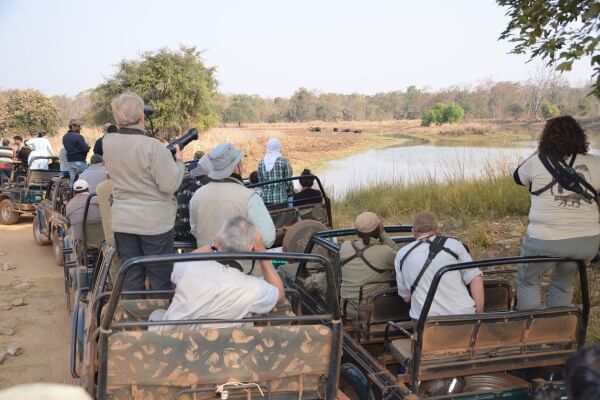
Flying To India
Several airlines connect major cities in India with Australia, however direct flights are only offered by Air India and Qantas.
Air India operates daily from Sydney and Melbourne to Delhi, and three times a week to from Melbourne to Mumbai. India wildlife
Qantas currently operates three times a week from Melbourne to Delhi and five times a week from Sydney to Bengaluru which will fly daily from December 2024 until March 2025, adding another 12000 seats between the two cities over the four month period. Qantas has a codeshare arrangement with Indigo for connection from Delhi, Bengaluru and Singapore to 21 other Indian cities.
READ ALSO: Indian links in Mauritius




